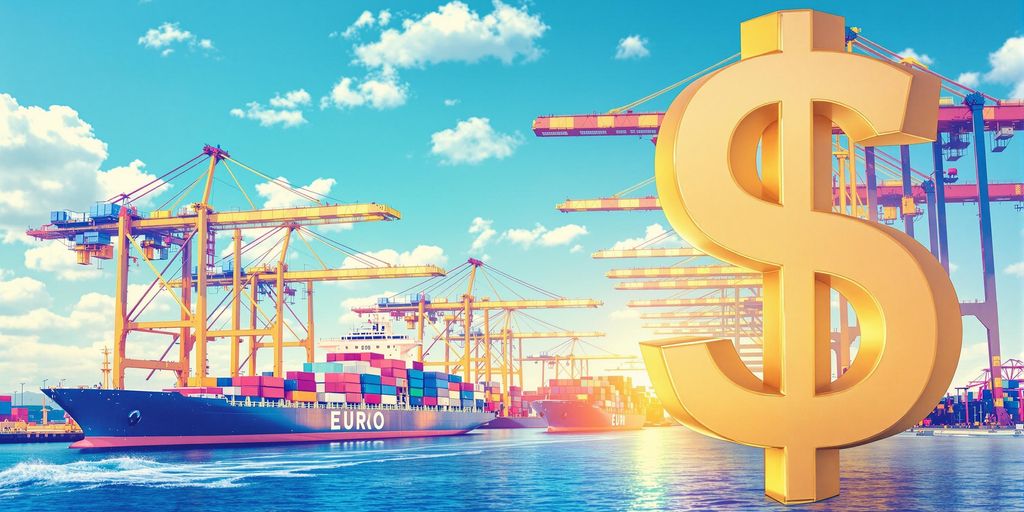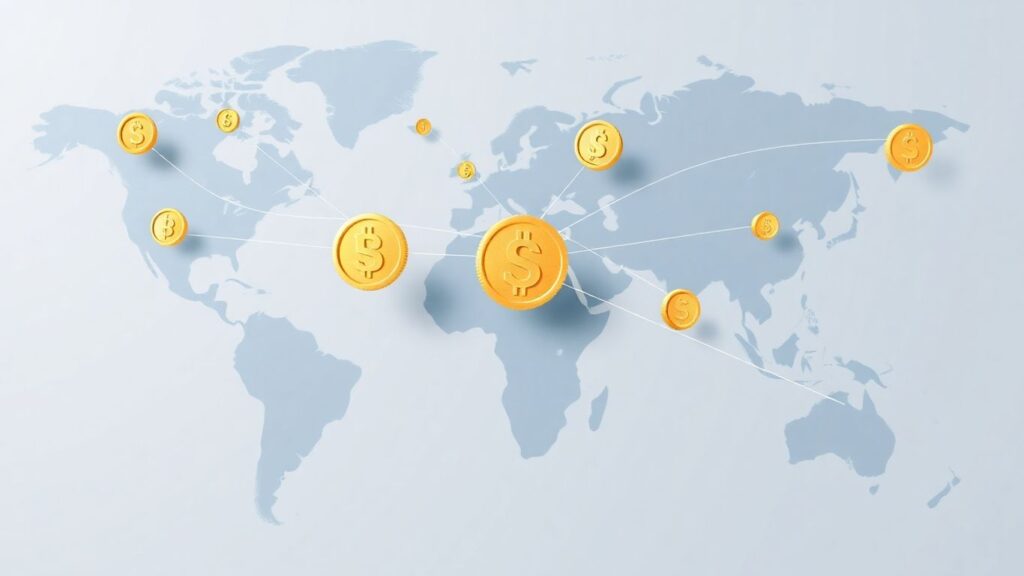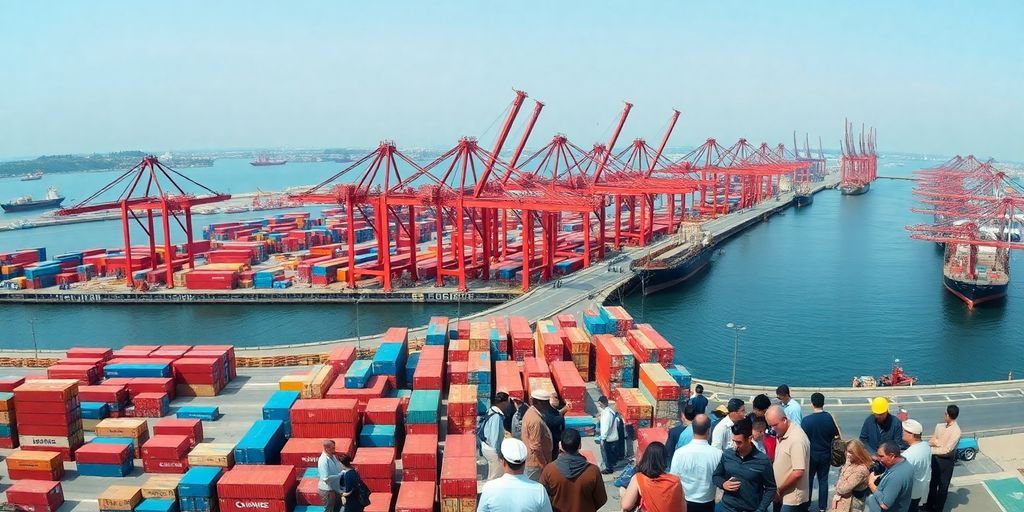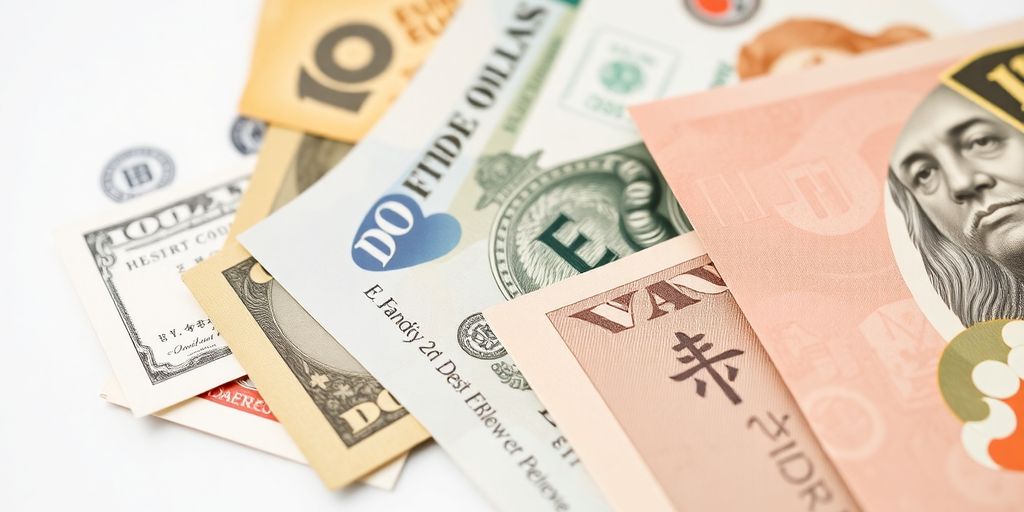Understanding Euro Dollar Circulation: Trends and Implications for Global Trade

This article explores the concept of Euro dollar circulation, its history, and its impact on global trade. Understanding these elements can help us see how the Euro dollar affects economies around the world. We will look at trends, regulations, and future possibilities in this area.
Key Takeaways
- Euro dollar circulation has a rich history that has shaped its current usage.
- It plays a big role in international trade and affects how countries interact.
- Different sectors and regions use the Euro dollar in various ways.
- Regulations are important for managing Euro dollar circulation and can create challenges.
- Technology is changing how we use the Euro dollar, offering both new chances and hurdles.
The Evolution of Euro Dollar Circulation

Historical Context of Euro Dollar
The Euro Dollar refers to U.S. dollars that are held in banks outside the United States. This concept began in the 1960s when European countries started to hold dollars for trade and investment. This shift marked a significant change in how currencies were used globally.
Key Milestones in Circulation
Several important events have shaped the circulation of Euro Dollars:
- The establishment of the Euro in 1999.
- The 2008 financial crisis, which increased demand for Euro Dollars.
- Recent trends showing over 29 billion euro banknotes in circulation, valued at more than €1.5 trillion.
Factors Influencing Circulation Growth
The growth of Euro Dollar circulation can be attributed to various factors:
- Increased international trade.
- Global economic stability.
- The rise of digital banking and online transactions.
The Euro Dollar has become a vital part of the global economy, influencing trade and finance in many countries.
Impact of Euro Dollar on Global Trade
Role in International Transactions
The Euro Dollar plays a significant role in international transactions. It is widely used for trade between countries, making it easier for businesses to conduct operations across borders. Many companies prefer using the Euro Dollar because it helps them avoid risks related to currency fluctuations.
Influence on Trade Policies
The presence of the Euro Dollar can influence trade policies in various ways:
- Countries may adjust their trade agreements to favor the Euro Dollar.
- Businesses might lobby for policies that support Euro Dollar transactions.
- Governments may consider the Euro Dollar’s strength when setting tariffs and trade regulations.
Effects on Currency Exchange Rates
The Euro Dollar affects currency exchange rates significantly. When more people use the Euro Dollar, it can lead to changes in the value of other currencies. This can create opportunities and challenges for businesses that trade internationally.
| Currency | Exchange Rate (to Euro Dollar) |
|---|---|
| US Dollar | 1.10 |
| British Pound | 0.85 |
| Japanese Yen | 130.00 |
The Euro Dollar’s impact on global trade is profound, shaping how countries interact economically.
In summary, the Euro Dollar is not just a currency; it is a vital part of global trade that influences transactions, policies, and exchange rates. Its growing importance is evident as it continues to gain shares in the market, gradually becoming a preferred choice for many international dealings.
Trends in Euro Dollar Utilization
Current Usage Patterns
The Euro Dollar is becoming increasingly popular in global markets. In fact, the euro and US dollar made up more than seven of 10 SWIFT payments worldwide in 2024, showing their dominance. This trend indicates that businesses are relying more on these currencies for international transactions.
Sector-Specific Adoption
Different sectors are adopting the Euro Dollar at varying rates. Here are some key sectors:
- Finance: Banks and financial institutions are leading the way in using Euro Dollars for transactions.
- Trade: Importers and exporters are increasingly using Euro Dollars to settle international trade deals.
- Technology: Tech companies are also embracing Euro Dollar transactions, especially in cross-border services.
Regional Differences in Utilization
The use of Euro Dollars varies by region. For example:
- Europe: High adoption due to proximity and trade agreements.
- Asia: Growing interest, especially in countries like China and Japan.
- Americas: Steady use, but less than in Europe.
The rise of Euro Dollar utilization reflects a shift in global trade dynamics, where businesses are looking for more efficient ways to conduct transactions across borders.
Regulatory Framework Governing Euro Dollar
Key Regulatory Bodies
The regulation of Euro Dollar circulation involves several important organizations. These include:
- European Central Bank (ECB): Oversees monetary policy in the Eurozone.
- Federal Reserve: Manages U.S. monetary policy and influences Euro Dollar dynamics.
- Financial Stability Board (FSB): Works to promote global financial stability.
Compliance and Legal Challenges
Compliance with regulations can be tricky for banks and businesses. Some common challenges include:
- Understanding complex rules: Different countries have different laws.
- Meeting reporting requirements: Banks must report their Euro Dollar activities accurately.
- Adapting to changes: Regulations can change, making it hard to keep up.
Impact of Regulations on Circulation
Regulations can greatly affect how Euro Dollars are used. Here are some impacts:
- Increased costs: Compliance can be expensive for banks.
- Limited access: Some businesses may find it hard to access Euro Dollar markets.
- Market stability: Proper regulations can help keep the market stable.
The regulatory environment is crucial for ensuring that Euro Dollar circulation remains efficient and secure. Understanding these regulations is essential for businesses and banks alike.
Technological Advancements Affecting Euro Dollar Circulation
Digital Platforms and Euro Dollar
The rise of digital platforms has transformed how the Euro Dollar circulates. These platforms allow for faster and more efficient transactions, making it easier for businesses and individuals to use the Euro Dollar in their dealings. Some key points include:
- Increased accessibility for users.
- Lower transaction costs compared to traditional methods.
- Enhanced security features that protect users’ information.
Blockchain and Its Implications
Blockchain technology is changing the game for Euro Dollar circulation. It offers a secure and transparent way to track transactions. Here are some important aspects:
- Decentralization reduces the risk of fraud.
- Smart contracts automate processes, saving time and money.
- Greater trust among users due to transparency.
Technological Barriers and Opportunities
While technology brings many benefits, there are also challenges. Some barriers include:
- Lack of understanding of new technologies among users.
- Regulatory hurdles that slow down innovation.
- Infrastructure issues in certain regions.
The future of Euro Dollar circulation will heavily depend on how well we adapt to these technological changes. Bringing central bank money into a digitalized world through the digital euro would safeguard our monetary sovereignty in the digital age.
Future Prospects for Euro Dollar Circulation
Predicted Growth Trajectories
The future of Euro Dollar circulation looks promising. Analysts believe that the Euro Dollar will continue to grow in importance. This growth is expected to be driven by several factors:
- Increased global trade
- Greater acceptance in international markets
- Enhanced digital payment systems
Potential Challenges Ahead
Despite the positive outlook, there are challenges that could impact circulation:
- Regulatory changes in major economies
- Competition from other currencies
- Economic instability in the Eurozone
Opportunities for Expansion
There are also many opportunities for the Euro Dollar to expand its reach:
- Adoption in emerging markets
- Integration with new technologies like blockchain
- Partnerships with global financial institutions
The Euro Dollar’s role in global trade is likely to evolve, presenting both challenges and opportunities for businesses and economies alike.
Case Studies on Euro Dollar in Global Markets

Successful Implementations
The Euro Dollar has been successfully used in various global markets. Here are some notable examples:
- European Union: The Euro Dollar plays a crucial role in trade among EU countries.
- Asia: Countries like Singapore and Hong Kong have adopted Euro Dollar transactions to enhance trade.
- Latin America: Nations such as Brazil are increasingly using Euro Dollar for international trade deals.
Lessons from Emerging Markets
Emerging markets have valuable lessons regarding Euro Dollar usage:
- Adaptability: Countries must adapt their financial systems to accommodate Euro Dollar transactions.
- Infrastructure: Strong financial infrastructure is essential for smooth Euro Dollar circulation.
- Education: Educating businesses about Euro Dollar benefits can boost its adoption.
Comparative Analysis with Other Currencies
When comparing Euro Dollar with other currencies, several factors stand out:
| Currency | Usage in Global Trade | Stability | Growth Potential |
|---|---|---|---|
| Euro Dollar | High | Moderate | High |
| US Dollar | Very High | High | Moderate |
| Yen | Moderate | Low | Low |
The Euro Dollar’s growing influence in global markets highlights its importance in international trade. As countries continue to embrace it, the implications for global commerce will be significant.
Conclusion
In summary, understanding how the Euro Dollar moves around the world is important for everyone. It affects not just big businesses but also everyday people. As we see changes in how the Euro Dollar is used, it can tell us a lot about global trade and the economy. Keeping an eye on these trends helps us prepare for what might happen next. By learning about the Euro Dollar, we can better understand the world we live in and how money flows between countries.
Frequently Asked Questions
What is a Euro Dollar?
A Euro Dollar is a U.S. dollar that is held in banks outside the United States. It is used in international trade and can help businesses make deals across borders.
How did Euro Dollar circulation begin?
The Euro Dollar started gaining popularity in the 1960s when people wanted to hold U.S. dollars outside the U.S. to avoid certain rules and taxes.
Why is the Euro Dollar important for global trade?
The Euro Dollar is important because it makes it easier for countries to trade with each other. It provides a stable currency that businesses can rely on.
What are some challenges with Euro Dollar transactions?
Some challenges include different laws in various countries and the risk of currency changes that can affect the value of the dollar.
How does technology affect Euro Dollar use?
Technology helps by making transactions faster and safer. Online platforms and new tools like blockchain are changing how Euro Dollars are used.
What might the future hold for Euro Dollar circulation?
In the future, Euro Dollar use could grow more, but there might be challenges like new rules or competition from other currencies.








Responses